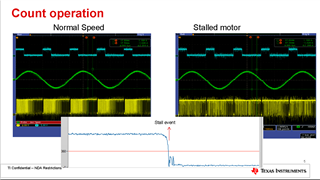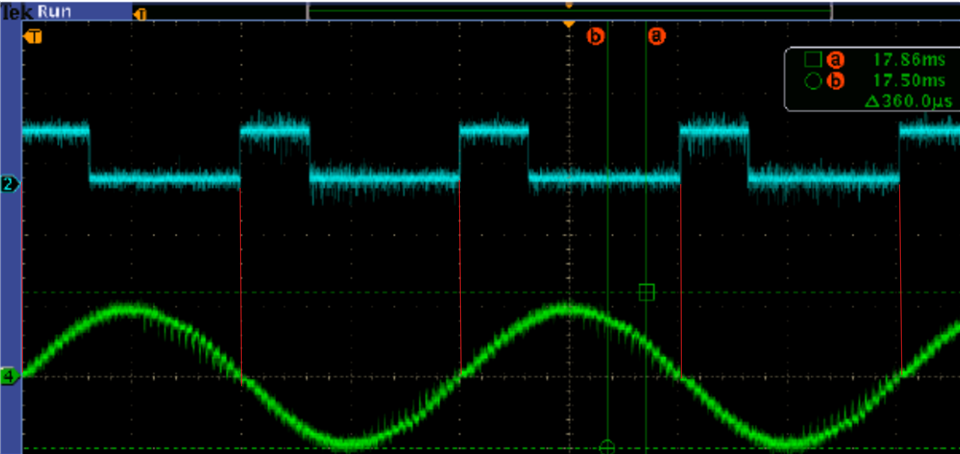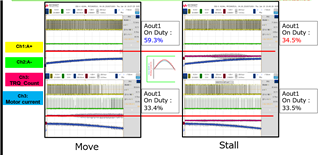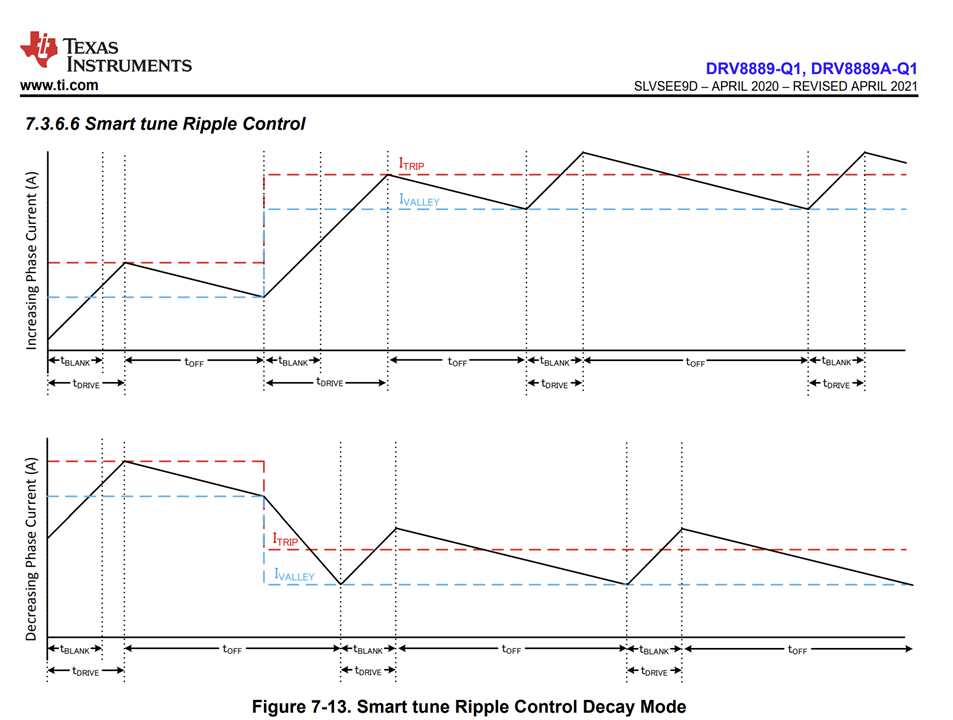Other Parts Discussed in Thread: DRV8889-Q1
Tool/software:
Hi, team.
This is the stall detection data from TI.
Can you tell me what each waveform represents?
Blue: STEP?
Green: Motor current?
Yellow: Motor output voltage?

Best, regards.
This thread has been locked.
If you have a related question, please click the "Ask a related question" button in the top right corner. The newly created question will be automatically linked to this question.
Tool/software:
Hi, team.
This is the stall detection data from TI.
Can you tell me what each waveform represents?
Blue: STEP?
Green: Motor current?
Yellow: Motor output voltage?

Best, regards.
Hi,
Thanks for your question.
Our stepper expert will look into this and get back to you.
Thanks,
Ibinu
Hi Ando-san,
Yes, green is motor coil current, yellow is one of the xOUTx voltage trace showing chopping tON and tOFF cycles. Blue is not STEP input, step pulses would be one pulse every microstep of the current waveform (if you zoom you can see small microsteps in the sine wave). It seems like zero crossing pulse output. This is not a signal that is available externally on the DRV8889-Q1. It may be a signal available as an internal only test mode of the device for TI internal use. Thank you.

Regards, Murugavel
Thank you for your answer. I understand each signal.
I used EVM to look at each waveform in the rising current quadrant and falling current quadrant. I checked the change in Duty ratio between rising and falling as described in the data sheet. Is this difference represented as torque count?
Also, my understanding is that changing the Duty ratio affects the motor current in the case of PWM control. What do you think?

Hi Ando-san,
I used EVM to look at each waveform in the rising current quadrant and falling current quadrant. I checked the change in Duty ratio between rising and falling as described in the data sheet. Is this difference represented as torque count?
The high level description of the stall detection algorithm and torque count representation is described in this application note, https://www.ti.com/lit/an/slvaei3/slvaei3.pdf.
Also, my understanding is that changing the Duty ratio affects the motor current in the case of PWM control. What do you think?
In order for the stall detection to work the decay mode STRC smart tune ripple control must be used. This is a variable tOFF based current regulation that will regulate for the lowest current ripple as shown in the datasheet - see below. For increasing currents you can see tON increases. The average current would look like a function of tON/tOFF duty ratio. In reality tON is determined by Itrip target, supply voltage and motor BEMF (speed) and tOFF is determined by current ripple during current decay (recirculation). The STRC mode adjusts tOFF automatically to keep the current withing the ripple boundary. For decreasing currents STRC will also use fast decay when needed to achieve the target Itrip. In summary, current regulation is done by variable tOFF with slow decay as well as using fast decay for decreasing currents. Thank you.

Regards, Murugavel